I have a friend who turned $10,000 into $1,600,000 last year. Besides marveling at his skill, I can only feel envy.
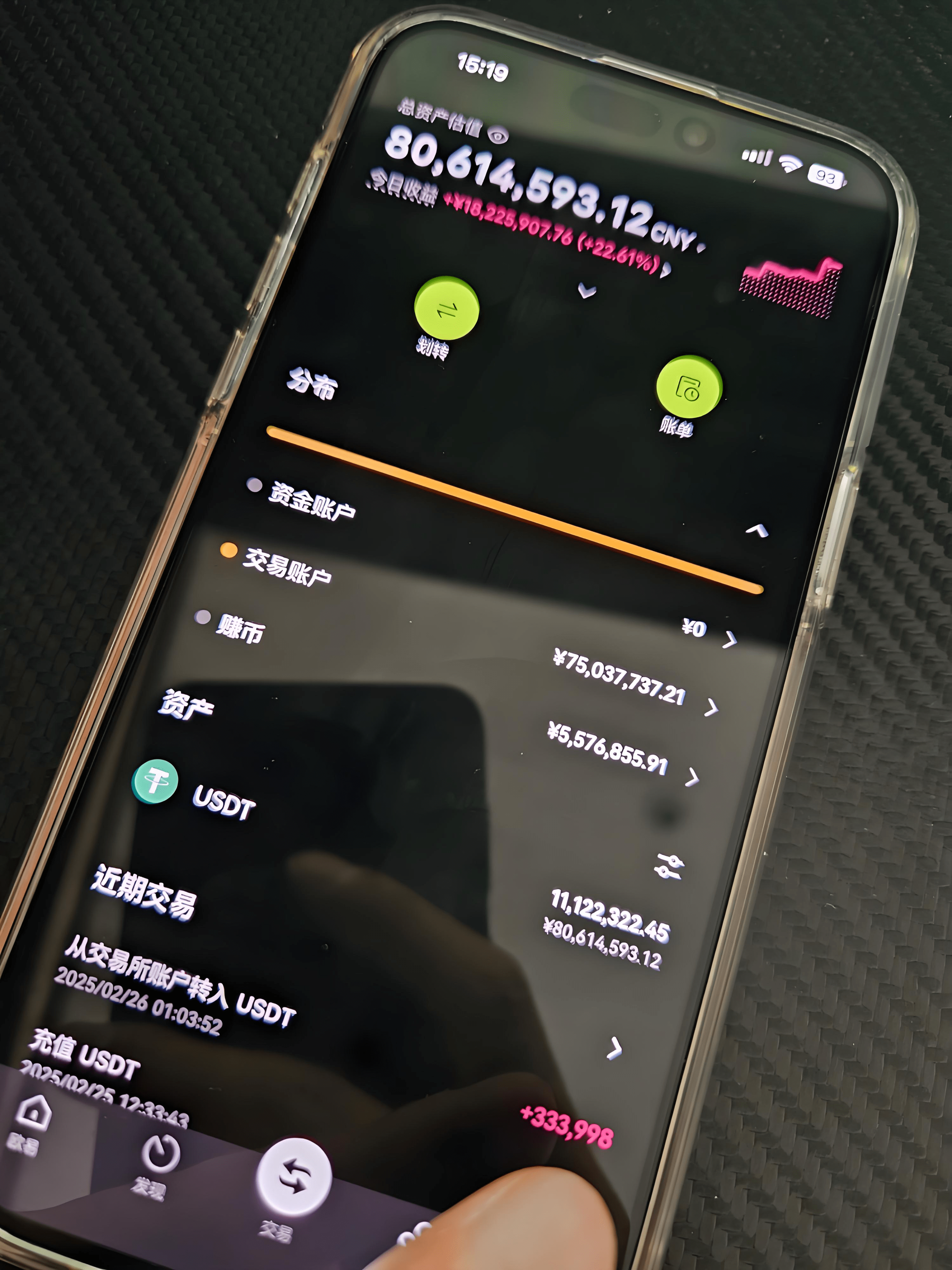
Because in contrast, although my experience of a liquidation last year left me in a state of loss and regret during that time. After thinking it over, I decided to invite this friend out to seek advice. After all, more learning can achieve oneself!
After some hints, I got straight to the point. When discussing liquidation, I demonstrated my mistakes in 10 different ways, for example:
I bought this price too late;
Short-term double kills for both bulls and bears, didn’t hold on;
The stop loss is set too small, and just as it hits the stop loss, it rebounds, etc.
........
After saying this, I asked: What do you think? My friend pondered for a moment and replied: I don't think much about it, trading is not only about price, but also about the system, but I didn't hear you mention having a trading system.
Afterwards, he elaborated on the rules of the trading system in detail, which benefited me greatly. I summarized it briefly and shared it with everyone.
1. With a trading system, even a novice can profit.
Many people believe that trading is about earning profits through price fluctuations.
However, price fluctuations inherently possess a high degree of uncertainty; whether from a technical or news perspective, there will always be some deviation from expectations, and how to view this deviation will directly affect your trading performance.
Here, what is required is not only market observation skills but also timing for opening and closing positions, position management, and mindset. This is the trading system.
The earliest trading system, in my opinion, is the grid trading method. Find a fluctuation range, then divide it into many evenly spaced grids, set an initial position, and buy for every drop in the grid and sell for every rise.
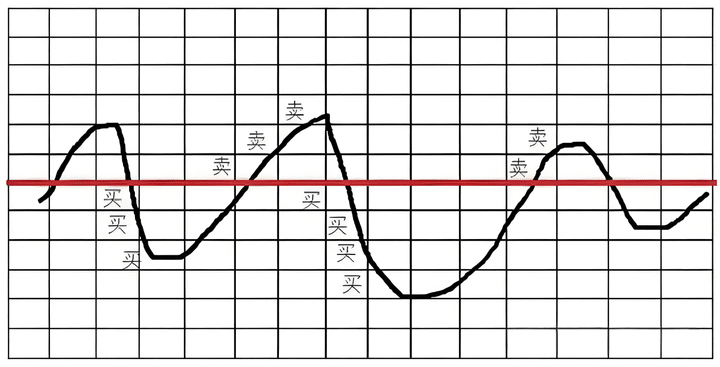
The inventor of the grid trading method is the American mathematician Shannon, who didn't understand the market at all, but relied on grid trading to achieve astonishing success in the stock market.
But if you review after the fact, you will find that the grid trading method at least did three points correctly:
Follow the discipline and trade according to the grid;
Not influenced by human nature, and do not randomly add positions;
Strict position management; Shannon's strategy uses the Kelly formula f=(pb-q)/b to calculate the best position ratio.
This basically covers all the elements that a trading system needs to have. So it’s not about price, but about the system, allowing 'novice' Shannon to also succeed in the market.
2. It is the system, not the price.
Traders with a trading system never complain about the buying price.
For example, in the following market segment, according to the requirements of the Dow theory regarding the normality of upward movement, the high and low points of the market generally rise together. If you are an aggressive investor, you might have considered shorting when the market broke below price 1.
If you are a bit cautious, prices 2 and 3 correspond to previous stage bottoms, both are entry opportunities.
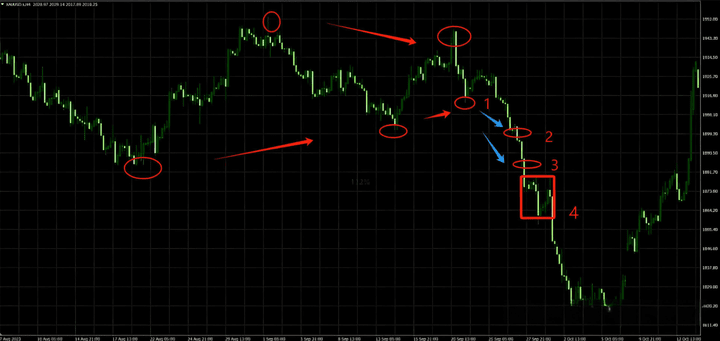
If you still missed it, the price did not form a bottom at position 4, and with the emergence of a big bearish candle, there was another opportunity to short. You see, in a trending market, as long as your trading system has one or several such entry indicators, you will ultimately participate, as long as you strictly execute according to your system.
This is also not absolute; as mentioned earlier, price also contains uncertainties. For example, at the end of this wave of market, despite the overall flattening and signs of bottom formation, it still conforms to the downward norm. If you were unfortunate here and chased a short, your stop loss will determine the extent of your loss control.
I suggest setting stop losses at 20%-30%, which aligns well with the 3:1 risk-reward ratio requirement. A 3:1 risk-reward ratio can ensure that even with multiple losses, you can protect your capital, which is what we often say: 'As long as you make the right call on 3 out of 10 trades.'
If your trading system has such a triggering mechanism, your losing trades will exit near 1850. But don't panic, next you will find that the market has again established an upward norm, breaking through previous resistance levels at prices 1, 2, and 3, all of which are excellent entry opportunities.
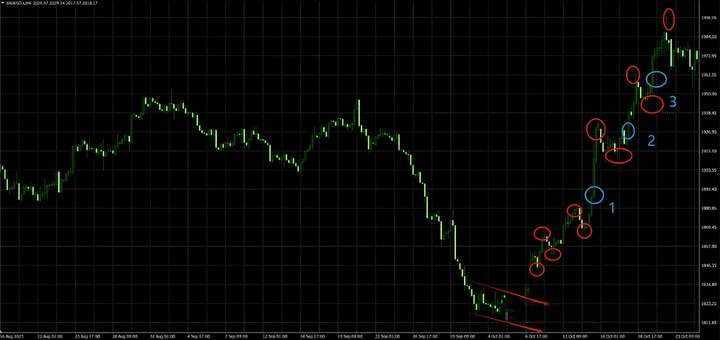
A mature trading system must have a well-defined mechanism for entry, exit, stop loss, and take profit. Once these mechanisms form a closed loop, they will continuously provide you with trading opportunities.
This segment of the market is based on a 4-hour chart, situated between short-term and daily trading, making it quite representative in trading. Some experienced investors also calculate the strength of rebounds and retracements based on the frequency of 4-hour fluctuation points.
3. Protect capital and profits.
Trading is for profit, but more importantly, it is to protect capital.
The author of the theory of fractals has repeatedly mentioned that only zero-cost trading is risk-free. In other words, after accumulating profits, use the profits to trade; even if you incur losses, as long as the capital remains, there will still be infinite possibilities in the future.
Of course, it's challenging for ordinary investors to trade in this way, but learning to exit in batches is also a necessary part of perfecting the trading system.
For example, in this market segment, if you bought at the top, you might consider exiting at prices 1, 2, and 3, because usually at key support and resistance levels, there are dense order positions, making price reversals likely. Exiting in batches can ensure that profits are protected at different extension points.
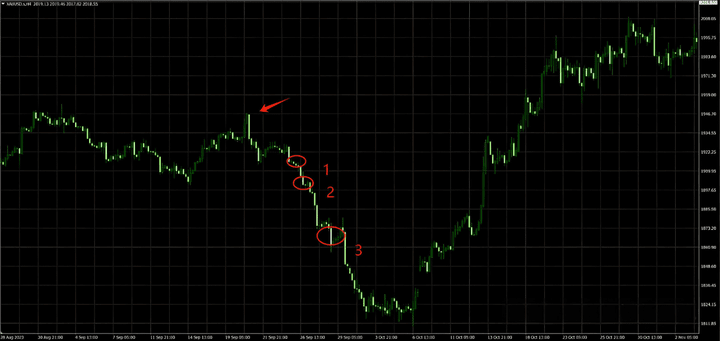
We can also use some tools to identify the order situation at these points and make judgments in advance. For example, some order flow tools can present the market footprints in real-time.
Order flow tools will real-time statistics (buy orders - sell orders) net order quantity and generate Delta values, displaying the market's long and short power comparison in real-time. When at the top of the market, if the Delta value shows an increase in net long orders, it indicates a bullish signal, and the likelihood of strong resistance appearing above is low, which will drive the market to rise with inertia.

In addition, order flow tools can also identify hidden price signals in the market. Generally, when Delta produces a large bearish candle and suddenly turns bullish with a long lower shadow, it usually indicates that institutions are placing buy orders below, and the bears cannot push the price lower, thus closing positions and buying longs. Coupled with the POC indicator, it can more clearly grasp market reversal signals.
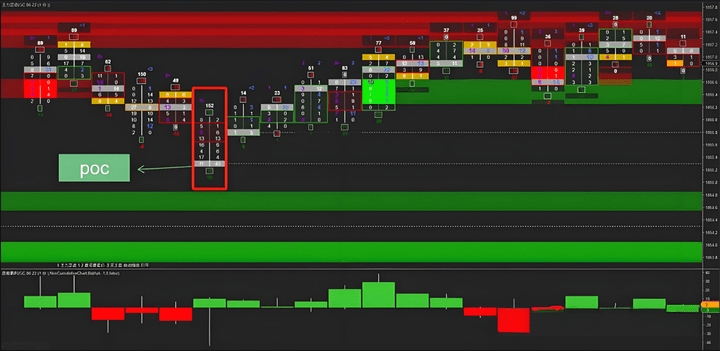
4. Learn to coexist with oscillations.
Price fluctuations are divided into oscillations and trends, but oscillations account for 70%, while trends only account for 30%. Therefore, most of the time, the market presents us not with exhilarating moments but with oscillating consolidations.
But that doesn't mean there are no trading opportunities during oscillations. In a 30-point market, as long as you confirm the range, high selling and low buying, constantly repeating this tedious process, you can still accumulate profits.
Once a breakout occurs, it is mostly the end of the consolidation market, leading to a short-term trend. At this point, trade with the trend, set good take-profit and stop-loss levels, and always pay attention to the return of oscillations. This is a complete trading cycle. If you understand these, your trading system can easily switch between different phases of the market.
This concept was actually first presented in Wyckoff's price cycle. Our consolidation range actually corresponds to the accumulation and distribution areas, while trending markets occur during supply and demand imbalances.
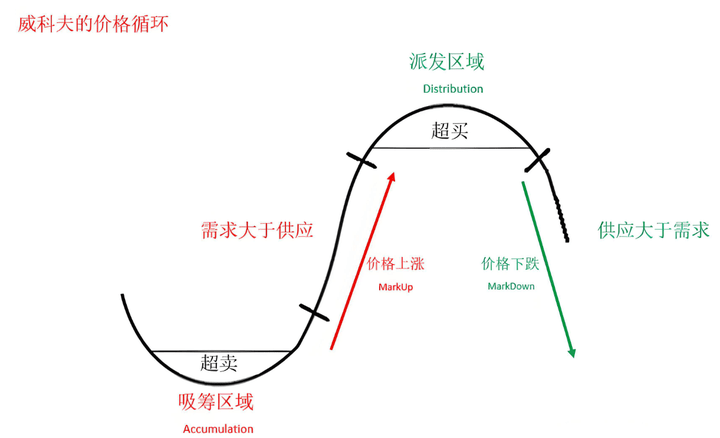
The difficulty in oscillating markets is how to identify false signals.
In the Wyckoff trading method, it is believed that a spring effect will exist, meaning that the market will temporarily break below the oscillating range but will then rebound from the bottom of the range to the top. The spring effect is a process of shaking out positions, so it will not last long. Therefore, in addition to setting stop losses in your trading system, you also need to recognize the price signals of breakouts.
Reading related articles on Wyckoff: (A must-read for short-term trading! Follow the big players without getting lost, Wyckoff volume-price analysis + the profit secrets of trend trading), (Decrypting Wyckoff's trading method: The unique skills of Wall Street trading masters that have successfully navigated the market for over 100 years)
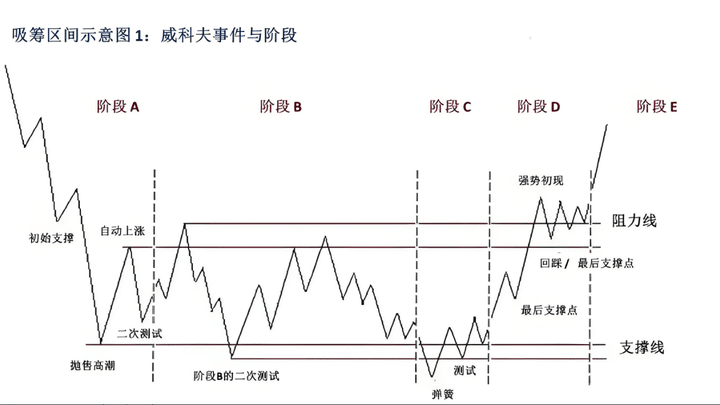
When multiple K-lines appear outside the oscillating range and repeatedly test without returning above the range, it indicates an effective breakdown; conversely, it is a process of shaking out positions. A mature trading system will also consider time factors beyond price.
In (Wyckoff 2.0), you will also see higher-order judgment methods regarding accumulation and distribution, which introduce trading volume data within the framework of time and price.
Through trading volume, you will find that the consolidation range precisely corresponds to the area where chips are concentrated. Usually, market initiation occurs because one side has digested the other's chips, taking the initiative in price control, hence price breakouts from the range typically occur with reduced volume.
Therefore, through the areas of high trading volume, we can pre-determine the value range, understand the fluctuation range, and provide references for grasping the oscillating market.
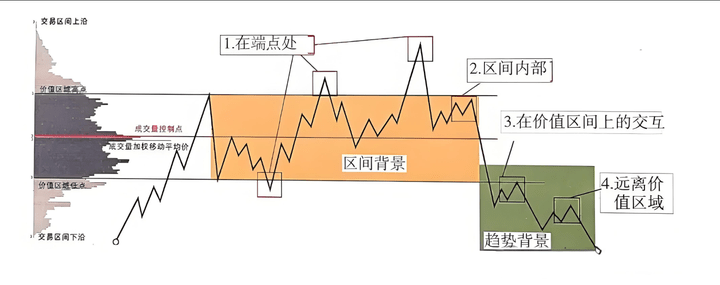
I particularly like a saying: A trading system is a set of rules that monitor market trends while restraining human nature.
A trading system is a complex collection that encompasses skills, mindset, and self-discipline. Many people may not lack understanding of market logic, and they may even be well-versed in the rules of technical analysis. However, they cannot overcome the weaknesses of human nature, chasing highs and selling lows, exiting with small profits, and holding large losses, repeatedly missing opportunities in the face of market uncertainties.
However, the best way to avoid uncertainty is to face it directly, control risks with take-profit and stop-loss, protect capital and profits by exiting in batches, and strictly adhere to trading discipline, so that thinking can truly become a treasure for profit.
Finally, keep in mind:
The cryptocurrency market is a marathon; stability is far superior to quick wins. What is gained by luck will eventually be lost due to strength. Only by integrating position management into instinct can one survive in a cruel market.
Remember: As long as you are alive, you have the right to wait for the next turnaround.
No matter how diligent a fisherman is, he will not go out to fish in a stormy season, but will carefully guard his fishing boat. This season will eventually pass, and a sunny day will come! Follow me, and I will teach you both how to fish and how to fish. The cryptocurrency market is always open, and only by following the trend can you have a life that follows the trend. Save this and keep it in mind!